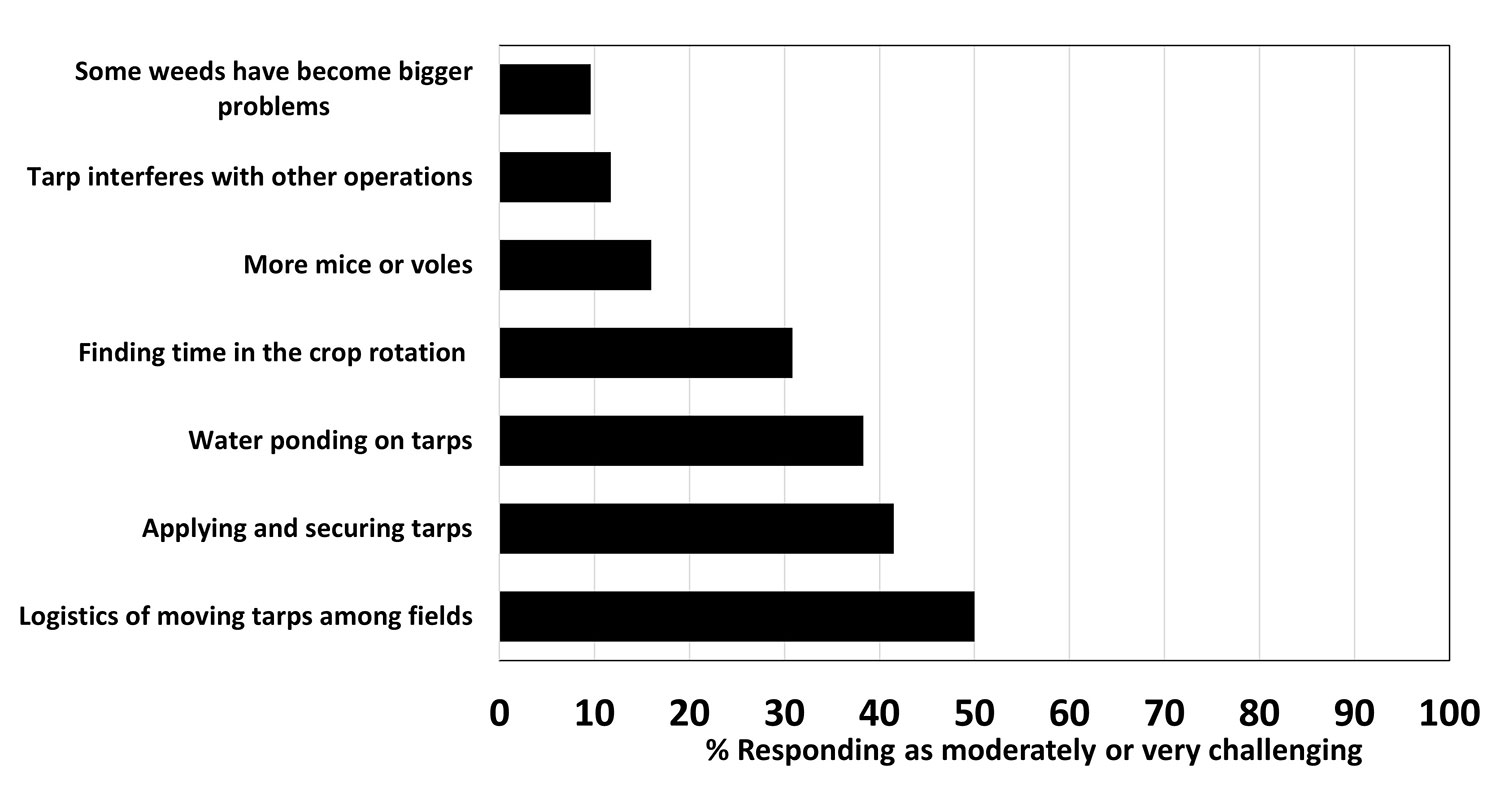Bulletin #1075, Tarping in the Northeast: Introduction
Reusable tarps, including black plastic (silage tarps), clear plastic, and landscape fabric, are multi-functional, accessible tools that are increasingly popular on small farms. The use of opaque materials that block light is frequently called “occultation” while the use of clear tarps is called “solarization.” We treat “tarping” as a general term to include both. Regardless of the material used, tarps are applied to the soil surface between crops and then removed prior to planting.
Definitions
Solarization is the practice of using clear tarps to capture solar energy and heat the soil surface. The effects of solarization on pests (weeds and pathogens) and beneficial organisms are highly dependent on weather conditions.
Occultation is the practice of using opaque (typically black) tarps to block light and therefore prevent photosynthesis. The word has Latin origins, meaning “to block.” The effects of occultation are less dependent on, but nonetheless affected by, weather conditions.
In cool climates like that of the Northeastern US, tarping has emerged as an important way to manage weeds, crop residue, soil moisture, and nutrients. Tarps can be versatile tools left in place for days to months at a time depending on context. They are commonly seen as ‘placeholders,’ covering soils to keep them weed-free and to retain moisture and nutrients until planting time. Many farmers use tarps to reduce the intensity of tillage or the number of tillage passes, while other farmers have moved to rotational no-till or even continuous no-till with tarps. Tarps have also been deployed as a way to transition new fields into production.
Farms using tarps are generally small (<5 acres) and employ organic practices, however, the reasons farmers use tarps are diverse. A recent survey of farmers in the Northeast (Rangarajan 2019) showed that there are many different goals with tarping.

Despite the advantages of using tarps, there are tradeoffs to this practice and many unknowns. Farmers cite the logistics associated with handling tarps, including moving, securing, and storing them, as especially challenging. Because of these challenges, tarping is currently scale-limited. Tarping is a powerful weed management tool, but some weed species can become problematic when tarping is deployed without additional or alternative weed management techniques. Occupying valuable field space during the growing season with a tarp on land that would otherwise be planted to cash or cover crops represents an opportunity cost, and the benefits of tarping must outweigh the time required to implement the practice effectively. While tarps are reusable, they are made of plastic; manufacturing, disposal, and plastic contamination during their use are concerns.
This guide is intended for those who are interested in or currently using tarps and would like to know more. The individual practice sections and farmer case studies serve as standalone resources. Research results and farmer experiences from multiple states in the Northeast have been combined to provide a thorough and up-to-date picture on the state of tarping knowledge including logistics, science, and economics.
In complying with the letter and spirit of applicable laws and pursuing its own goals of diversity, the University of Maine System does not discriminate on the grounds of race, color, religion, sex, sexual orientation, transgender status, gender, gender identity or expression, ethnicity, national origin, citizenship status, familial status, ancestry, age, disability physical or mental, genetic information, or veterans or military status in employment, education, and all other programs and activities. The University provides reasonable accommodations to qualified individuals with disabilities upon request. The following person has been designated to handle inquiries regarding non-discrimination policies: Director of Institutional Equity and Title IX Services, 5713 Chadbourne Hall, Room 412, University of Maine, Orono, ME 04469-5713, 207.581.1226, TTY 711 (Maine Relay System).

